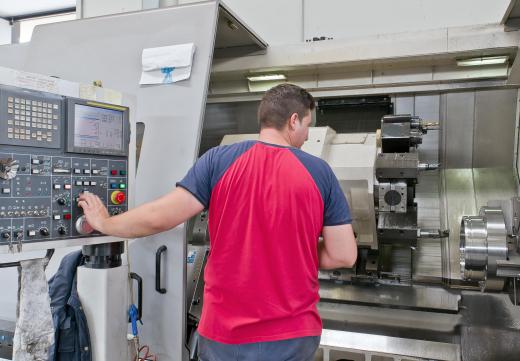A milling table is a part of a standard milling machine. The table is an important part of the machine’s function and is featured on every complete milling machine. The milling table is where a worker sets his work piece in order to mill it with the attached milling head.
There are three main types of milling tables. The first kind is the standard milling table. These are the most commonly found tables and are on almost all milling machines. They are adjustable by height and allow the worker to feed the work piece past the drill bit at an angle that is determined beforehand. Other than the feeding function, they are not meant to be in motion while the machine is in use.

Another kind of milling table is the rotary table. These are tables that are used on rotary mills and rotate as needed by the worker. This can be useful if the worker wants to carve circular or semicircular grooves into a work piece. They can also be turned on and off to allow a worker to precisely drill a series of holes that are positioned circularly around a central axis point.
The most advanced type of milling table is used on computer numerical controlled (CNC) milling machines. These are automated and may rotate on several different angles depending on the demands of the work piece that is programmed into them. Some of the newer CNC milling features a “quick table” design which allows the worker to insert a new work piece into the machine before it has completed milling the work piece it is currently working on.
Most milling machines come with the milling table attached and ready for use. Sometimes a worker may wish to buy all the parts of a milling machine separately, creating a customized milling machine for a specific purpose. This is certainly possible, and the Internet easily helps when it comes to buying specific parts that are needed for a project. Some hardware stores may also carry unattached milling tables or would be able to order one for a customer. Secondhand sources such as newspaper classifieds and garage sales may be of use as well.
Regardless of the kind of milling a worker wants to do he or she will need to use a milling table. All mills require a table to work safely. Their proper use ensures the accurate and efficient use of a milling machine.
